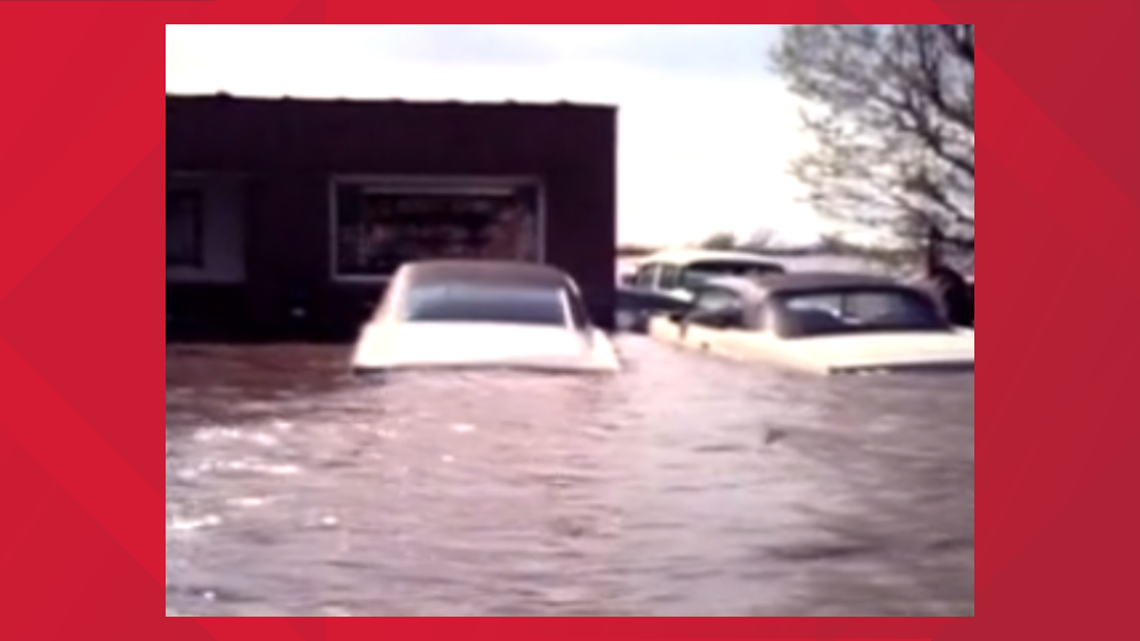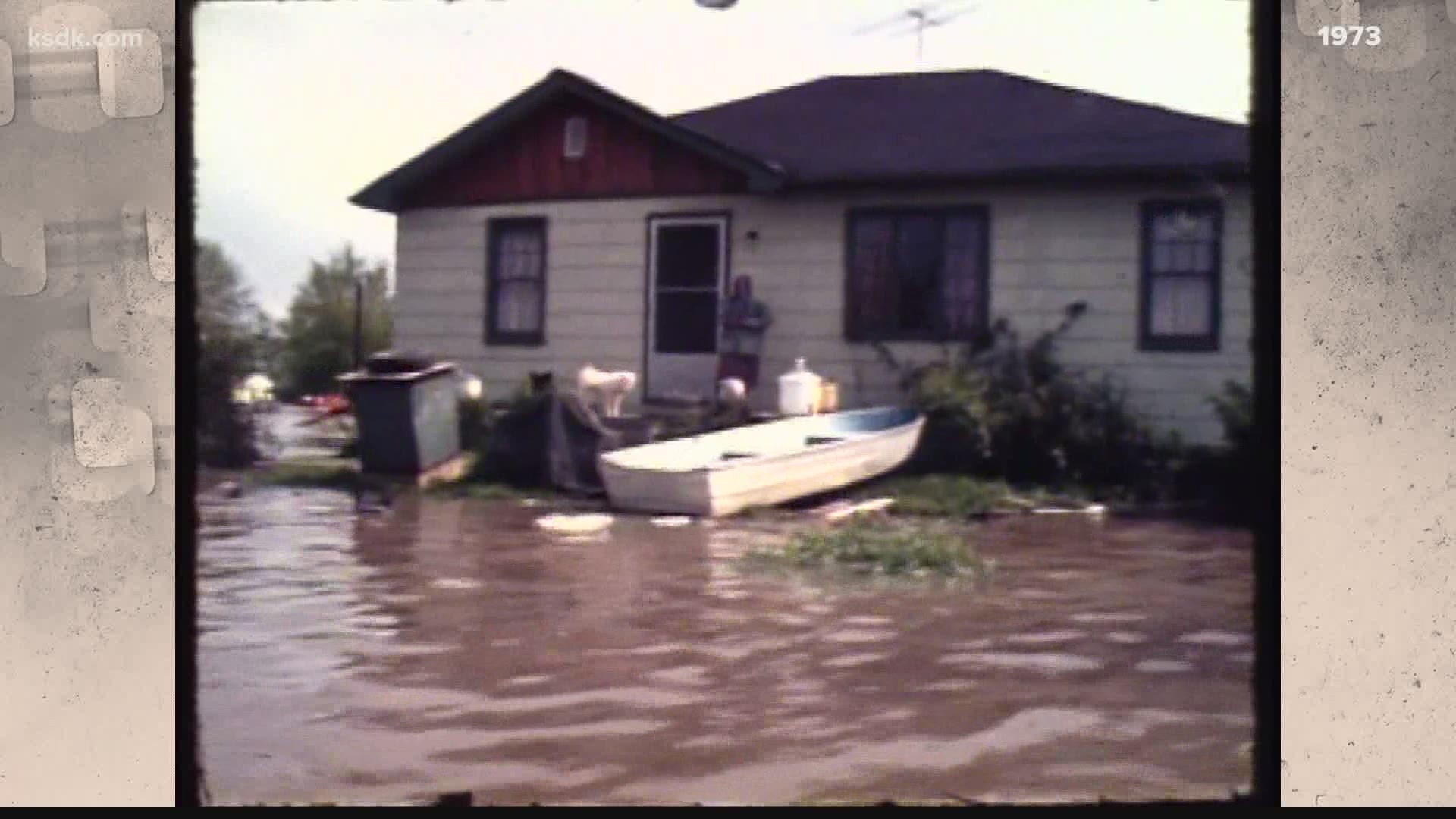ST. LOUIS — When we talk about flood disasters in St. Louis, the Flood of ’93 likely comes to mind.
But there was another three-month-long, slow moving flood disaster in St. Louis.
It happened in 1973, and we dug into the 5 On Your Side archives for the film, now 48 years old.
The water started rising in the spring of that year, with the Mississippi River marking heights not previously seen before.
All that high water triggered a series of levee failures.
On March 10, 1973, the Mississippi River reached flood stage and wouldn’t drop below that point until May 26.
Streets turned into rivers. Homes, cars and businesses were swallowed by water.


Residents in the water’s path could only watch, and wait for it all to recede.
Our Channel 5 reporter talked with residents, asking, “I can't imagine you're not looking forward to cleaning up all the mess that the flood left behind?”
A resident named Miss Nelson replied, “No, but it'll have to be done.”
By April, sandbagging operations were in full swing in the bistate. The region's many volunteers struggled to keep up.
Our station was known as K-S-D TV at the time, and former anchor Julius Hunter even rolled up his sleeves to help.
Even life on the water changed. The Coast Guard had an important message for boaters along the Meramec and Illinois rivers: slow down.
“A small motorboat just going medium or fast speed, going by a house flooded with two or three feet of water, could move a house off its foundation,” a Coast Guard spokesman told our reporter. “These wakes can cause a lot of damage without the boater really realizing it.”
The view from Chopper 5 showed homes and farms underwater as far as the eye could see. The rising river didn't keep looters away. As soon as homeowners would leave, thieves would come in by boat and take what they could find.
In the city of St. Louis, flood water came up to the bottom of the Eads bridge and not even the mighty Admiral riverboat was safe.
In 1974, the city of St. Louis dedicated an 11-mile flood wall.
Most of it was in place in 1973 and the north side of the city escaped serious damage.
Twenty years later, in 1993, rivers rose even higher. Those records still stand.

